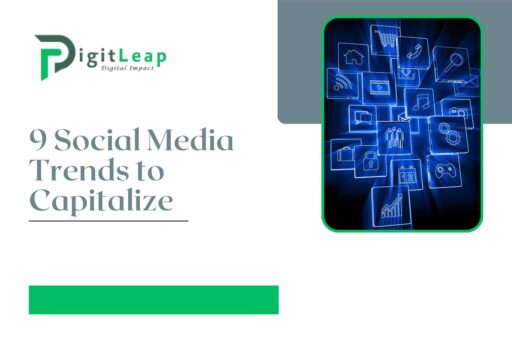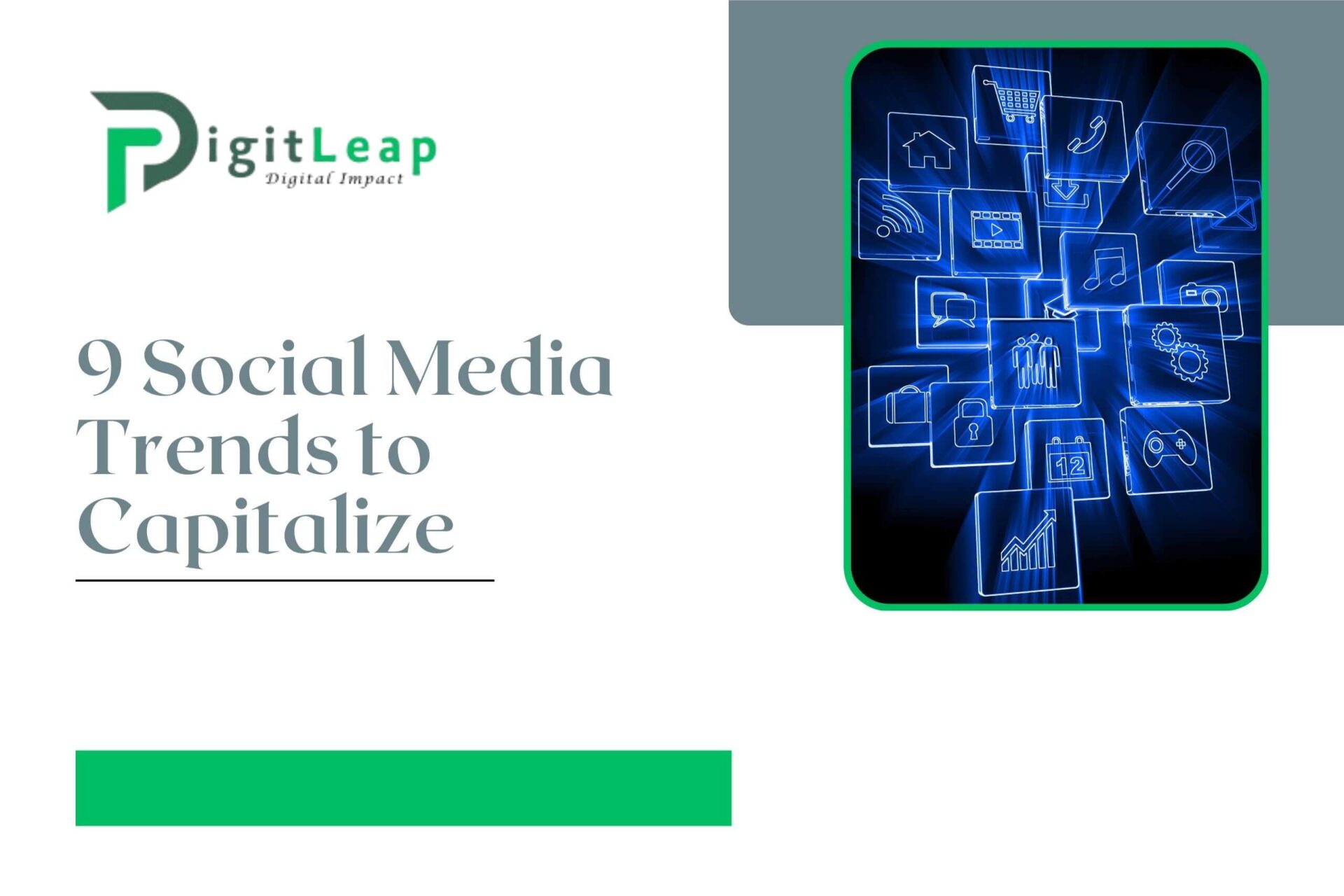Social media is constantly evolving, and for businesses that want to stay competitive, adapting to new trends is essential. As we look ahead to 2025, social media marketing is more dynamic than ever, focusing on interactivity, personalization, and community building. From immersive technologies to the continued rise of social commerce, here are nine social media trends that businesses should capitalize on to connect with audiences and stay relevant in the coming year.
1. The Growth of Short-Form Video Content
Short-form video content continues to dominate social media. Platforms like TikTok, Instagram Reels, and YouTube Shorts have shown that audiences prefer bite-sized, engaging videos that are quick to consume. In 2025, this trend will grow even stronger as social media users increasingly prioritize content that’s brief, entertaining, and easy to share.
Brands are creating short videos to introduce new products, share behind-the-scenes insights, and connect with followers in a personal way. The key is to create engaging, authentic videos that convey the brand’s message in under a minute. Short-form content is an effective way to capture attention quickly and build connections with audiences in a fast-paced digital world.
2. Social Commerce Takes Center Stage
Social media is no longer just a place for sharing content; it’s a fully-fledged shopping destination. Social commerce has been growing steadily, allowing users to shop directly within social media apps like Instagram, Facebook, and TikTok. By 2025, social commerce will be a primary feature on most platforms, making it easier than ever for brands to convert engagement into sales.
Brands are setting up storefronts within social media apps, using shoppable posts, live-streamed shopping events, and in-app purchasing options. Social commerce shortens the buyer’s journey, providing a seamless shopping experience for users. This trend allows brands to reach customers where they already spend their time, increasing convenience and encouraging impulse purchases.
3. The Rise of Niche Social Platforms
While platforms like Instagram and Facebook remain popular, niche social media platforms are gaining traction. Users are increasingly seeking more tailored, community-based spaces where they can connect with people who share specific interests. Platforms focused on particular industries, hobbies, or age groups are seeing a surge in popularity.
Brands are beginning to engage with audiences on these niche platforms, where they can reach targeted communities and create meaningful connections. For example, gamers are active on Twitch and Discord, while professionals might connect on niche networks beyond LinkedIn. By building a presence on these focused platforms, brands can establish themselves as leaders within specific communities and reach a more engaged audience.
4. Authenticity and User-Generated Content Lead the Way
In 2025, authenticity is more important than ever. Consumers want real connections with brands and are drawn to content that feels genuine. User-generated content (UGC), such as customer reviews, testimonials, and photos, is becoming a powerful tool for building trust and community.
Brands are encouraging their followers to create and share content, whether it’s through contests, hashtags, or shout-outs. UGC offers social proof, showing potential customers that real people love and use a product. This type of content is more relatable and trustworthy, helping brands foster authenticity and strengthen their reputation.
5. AI-Powered Personalization
Personalization has been a buzzword for years, but AI is now making it more advanced. In 2025, social media platforms will continue to use AI to deliver highly personalized experiences for each user. From tailored content suggestions to personalized ad targeting, AI allows brands to reach individuals with content that feels uniquely relevant to them.
For marketers, this means being able to create campaigns that cater to different segments of their audience more effectively. AI-driven personalization helps brands improve engagement, increase relevance, and enhance customer satisfaction. By understanding users’ preferences and behaviors, brands can craft messages that resonate on a personal level.
6. Augmented Reality (AR) Enhances Interactivity
Augmented reality has evolved into a powerful tool for brands looking to create immersive and interactive experiences. In 2025, more brands are expected to use AR to enhance customer interaction on social media. From virtual try-ons to interactive filters, AR offers innovative ways for consumers to engage with products before making a purchase.
Brands in fashion, beauty, and home decor are leading the way with AR technology. For instance, AR can let users try on sunglasses or see how a piece of furniture would look in their living room. This hands-on approach helps customers feel more confident in their purchases and makes the shopping experience more engaging and memorable.
7. Social Media as a Customer Service Hub
More than ever, people are turning to social media to reach brands directly. In 2025, social media will continue to play a crucial role in customer service, with users expecting quick and helpful responses to their questions and issues. Social media platforms provide a convenient, fast way for customers to get answers without navigating phone trees or waiting on hold.
Brands that provide excellent customer service on social media can build stronger relationships with their followers and create a positive brand image. Quick response times, personalized assistance, and helpful interactions make customers feel valued and heard, boosting loyalty and retention. In turn, these public interactions also showcase a brand’s commitment to customer care.
8. Social Media Communities Strengthen Brand Loyalty
As users seek more meaningful interactions, social media communities are becoming increasingly popular. Brands are creating groups and communities on platforms like Facebook, Reddit, and Discord, where users with shared interests can connect. These spaces encourage discussion, feedback, and deeper engagement with a brand.
Social media communities allow followers to feel like part of an exclusive club, where they can receive insider information, special offers, and direct communication with the brand. By cultivating these communities, brands can strengthen customer loyalty, create brand advocates, and gain valuable insights into what customers want and need.
9. The Continued Importance of Influencer Partnerships
Influencer marketing remains a powerful strategy, but in 2025, brands are looking for more authentic and long-term partnerships with influencers. Instead of focusing solely on follower counts, brands are working with influencers who have a genuine connection to their audience and align with the brand’s values.
Micro- and nano-influencers—those with smaller but highly engaged followings—are becoming particularly valuable for brands. These influencers offer authenticity and trust, which resonates more deeply with audiences than traditional advertising. By building lasting relationships with influencers, brands can reach targeted audiences with content that feels credible and relatable.
Conclusion
The social media landscape in 2025 is all about creating genuine connections, offering immersive experiences, and simplifying the customer journey. Brands that embrace these trends—from AI-driven personalization and AR interactivity to niche platforms and UGC—will have a stronger presence and make a bigger impact.
At Digit Leap, we specialize in helping brands stay ahead of these trends, using innovative strategies to maximize social media impact. By understanding the evolving needs of audiences and creating tailored approaches, we empower businesses to build lasting connections and thrive in an ever-changing digital world.






